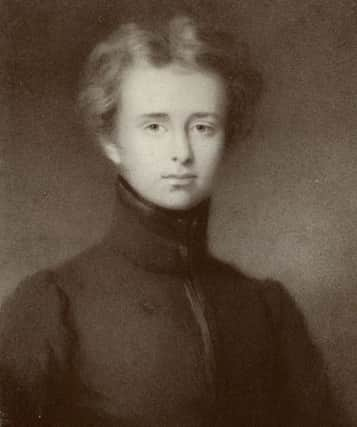Londonderry's martyr of Malaga faced firing squad on Mediterranean beach


“It was summer. The wheat fields were golden, the oats were green and deep lakes lay hidden. A duck sat on her nest hatching her ducklings but one enormous egg took much longer than the rest. At last it cracked open. ‘Peep peep!’ squeaked the duckling as out it tumbled. But it was so big and ugly!”
Many of us will recall the children’s story, and Danny Kaye’s song about the Ugly Duckling in the 1950s.
Advertisement
Hide AdAdvertisement
Hide AdCuriously, the fairy-tale narrative shares more than a few resonances with lines written in 1862 describing a cemetery in Málaga, southern Spain - “a little paradise, this charming garden. Here were myrtle hedges, covered with flowers sufficient for a thousand bridal wreaths with high geranium bushes growing around the tombstones...”
The Ugly Duckling, and the evocative description of the Spanish graveyard, were penned by Hans Cristian Andersen, the much-loved Danish writer of the Little Mermaid, the Snow Queen and many other tales that captured our childhood imaginations.
The Málaga cemetery that charmed him was Spain’s first Protestant burial ground - the Cementerio Inglés de Málaga - opened in December 1831.
Andersen adored the historic sea-port and regarded its English Cemetery as one of his favourite places in his widely-travelled world.
He even expressed a desire to be buried there!
Advertisement
Hide AdAdvertisement
Hide AdLocated just behind the bull ring on La Avenida de Príes, it was opened as a resting place for Protestants after persistent efforts by the British Consul, William Mark.
Previously, only Roman Catholics could be buried in consecrated ground in Spain. In Malaga the non-Catholic dead were treated as heretics and buried upright in the sandy seashore at night.
Their bodies were left to the harsh mercies of the tide, the waves and scavenging birds and animals - until Mark built the cemetery.
One of its most famous graves is probably its first, the resting place of one of Málaga’s most historic figures - 26-year-old libertarian Robert Boyd, from Londonderry.
Advertisement
Hide AdAdvertisement
Hide AdBoyd, executed in 1831 for his leading role in a failed uprising against King Ferdinand VII, is known as the Martyr of Malaga.
There are a number of fine, prominent memorials to him in the city, which Roamer recently visited.
There’s also one in the porch of Londonderry’s St Augustine’s Church.
How did the son of a wealthy Londonderry family, who’d served as an army Lieutenant in Bengal, come to be executed by a firing squad on a sun-drenched Mediterranean beach in 1831?
Advertisement
Hide AdAdvertisement
Hide AdThe intriguing narrative begins in 1808 when Napoleon’s forces invaded Spain and the Duke of Wellington, aided by Spanish guerrillas, ousted the French in the Battle of Salamanca in 1812.
King Ferdinand VII was restored to the Spanish throne by the British in 1814, on condition that he ruled under the more liberal Constitution of Cadiz, drawn up in 1812.
Ferdinand reneged and his autocratic regime provoked a revolt in 1820. He was imprisoned, and promised again to reform.
After his release in 1823 he yet again broke his promise and ferociously avenged his opponents.
Advertisement
Hide AdAdvertisement
Hide AdMany were driven into exile, including General José María Torrijos, who went to England and attempted to raise money and troops for a rebellion against Ferdinand.
Lieutenant Robert Boyd, introduced to General Torrijos in London, pledged loyalty and funding.
In 1831 Boyd bought a ship and set sail for Málaga with Torrijos and some 60 followers.
They were forced ashore by Spanish ships near Málaga and hid in hills but were soon rounded up by Spanish troops.
Advertisement
Hide AdAdvertisement
Hide AdMost were incarcerated in Málaga’s Convento del Carmen, under orders to be executed.
British Consul William Mark, aided by an Irish friar, contacted the Londonderry man, but couldn’t secure his release.
Bound with chains, Boyd wrote a letter to his brother William, conveying love to his mother and family.
His words were heart-breaking.
“Ere this letter reaches you I will be mouldering in my grave in a foreign land. The preparations for death are going on rapidly around me.
Advertisement
Hide AdAdvertisement
Hide Ad“Violent have been the attacks they have made upon me to make me recant. Dark will be the deed that will be done… I die like a gentleman and a soldier. I am to be shot…in about an hour. At this moment I think only of the affliction that this news will bring upon my dear, very dear, brothers and sisters.”
The young Londonderry man’s letter ended - “Last best of love to my mother. Adieu. Yours till the last, affectionately, Robert Boyd.”
He was marched to the beach with 48 of his fellow prisoners on December 11, 1831 and executed by a firing squad.
Boyd was one of the first to fall.
His grave in the English Cemetery is marked by a gothic obelisk, with the inscription: “To the memory of Robert Boyd, Esq, of Londonderry, Ireland. The friend and fellow-martyr of Torrijos…who fell at Málaga, in the sacred cause of liberty.”
Advertisement
Hide AdAdvertisement
Hide AdA more recent plaque states: “Robert Boyd, héroe romántico”.
In Málaga’s central Plaza de la Merced, a tall, neo-classical obelisk commemorates him among the “49 victims, who for their love of patriotic liberty, where sacrificed in this city” and a Málaga street (a ‘calle’) is named Calle Robert Boyd.
Roamer flew from George Best City direct to Spain with Aer Lingus. All flights are on aerlingus.com